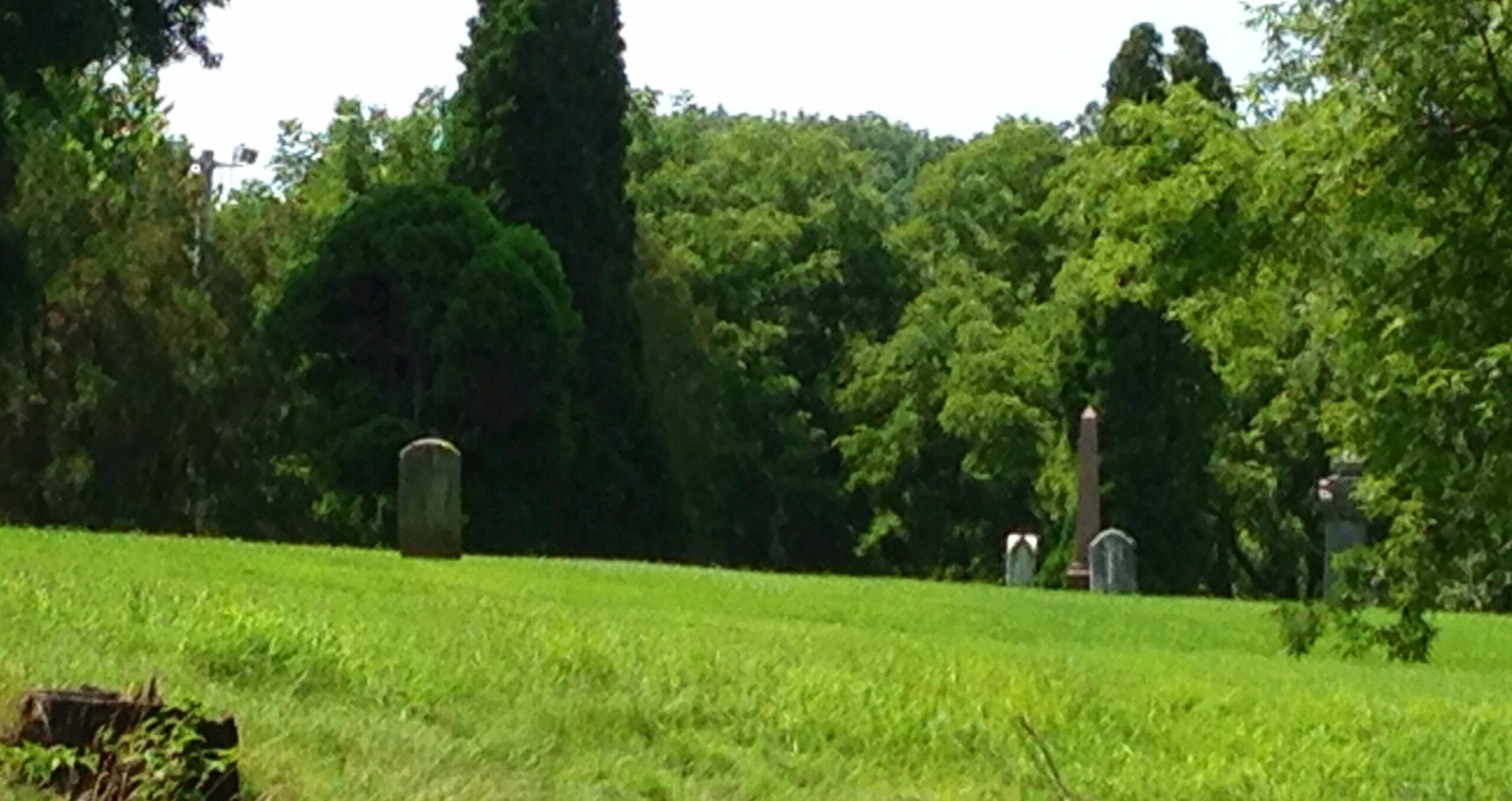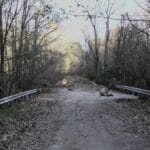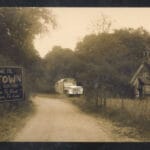Get ready to delve into the eerie world of Helltown, Ohio, where local folklore and history intertwine. This town has been shrouded in mystery for years, and it’s time to peel back the layers and uncover the truth behind its haunting reputation. We’ll explore its abandoned buildings, unravel the whispers of its ghostly inhabitants, and discover the real events that have shaped the legend of Helltown.
The Legend of Helltown: Where Myths Take Root
Have you heard the whispers about Helltown, Ohio? A place lost to time, shrouded in eerie tales and unsettling rumors? It’s a name that sends chills down your spine, conjuring images of abandoned buildings, shadowy figures, and whispers of the paranormal. But what’s the real story behind this infamous town? Buckle up as we journey into the heart of Helltown, separating fact from fiction and unraveling the mysteries that have captivated curious minds for decades.
Birth of an Eerie Tale
Before the legends took root, Helltown was known as Boston Mills, a peaceful town with a history as rich as the Ohio soil. Imagine a time when the Lenape Native Americans called this land home, their presence dating back to 1758. Sadly, their story took a turn when European settlers arrived, leading to the forced removal of the Lenape people.
Fast forward to 1974, a pivotal year in the making of Helltown. The US government, aiming to establish the Cuyahoga Valley National Park, began acquiring land in Boston Township. This decision sparked a wave of resistance from residents unwilling to leave their homes and community. The result? Forced evictions and a mass exodus that left behind a ghost town of empty houses, deserted streets, and a haunting silence.
Among the abandoned structures stood a decaying church, its steeple reaching for a sky now heavy with ghostly tales. Add to that the overgrown roads winding through dense forests, and it’s no wonder that imaginations ran wild. It was the perfect breeding ground for chilling stories that spread like wildfire.
Whispers in the Shadows
Over time, the whispers evolved into full-blown legends, each more spine-tingling than the last. Tales of satanic rituals conducted in the shadows of the abandoned church sent shivers down the spines of anyone brave enough to venture into Helltown after dark. Rumors of a mutated python, its scales glinting under the pale moonlight, kept locals looking over their shoulders.
And then there was the legend of the haunted school bus, forever frozen on a forgotten road, its ghostly passengers forever trapped within its decaying shell. You could almost hear the echoes of their laughter, distorted and chilling in the stillness of the night.
These stories, while undeniably captivating, are just that: stories. While they add a thrilling layer to Helltown’s mystique, they lack concrete historical evidence.
Unmasking the Truth: Beyond the Myths
If the truth be told, the real story of Helltown is far more grounded in reality, though no less fascinating. It’s a story intertwined with government decisions, the impact of human actions on the environment, and our enduring fascination with the unknown.
The government’s intervention, though well-intentioned, left a scar on the landscape, transforming a vibrant town into a ghost town. The forced evictions and the loss of their homes left an indelible mark on the displaced residents, their stories a poignant reminder of the human cost of progress.
Nature, as it often does, began to reclaim the abandoned town. Trees pushed through cracks in the pavement, their roots weaving through the foundations of forgotten homes. Wildlife, emboldened by the absence of human activity, made Helltown their own.
Key Points about Helltown, Ohio:
- Forced Displacement:
- Lenape Native Americans were removed from their ancestral lands in 1758.
- US government forced residents to evacuate Boston Mills in 1974 to establish Cuyahoga Valley National Park.
- Legends vs. Reality:
- Spooky tales of Helltown, such as satanic rituals and mutated pythons, lack historical evidence.
- The haunting atmosphere of the abandoned town has fueled the legends.
- The Human Element:
- The displacement of residents left a lasting impact on their lives and memories.
- The human cost of progress is evident in the abandoned town.
- Nature’s Reclaim:
- Vegetation has overgrown the abandoned town, and wildlife has returned.
- Respectful Exploration:
- Visit Helltown with respect for the history, the land, and the displaced residents.
Unlocking the Mystery: Is Helltown, Ohio Still Standing?
You might be surprised to learn that Helltown, Ohio, never actually existed as a real town. It’s more like a nickname that’s stuck to a part of Boston Township, found within Summit County, Ohio. Today, this area is nestled inside the Cuyahoga Valley National Park.
So, where did this spooky nickname come from? It all started back when the Cuyahoga Valley National Park was being established. Rumors and stories began to circulate, painting the area as a place of eerie happenings and strange occurrences. These tales, passed down through generations, gave rise to the moniker “Helltown,” and the name has lingered ever since.
Despite the chilling stories, there’s no official record or historical evidence to back up the more sinister legends associated with Helltown. However, the combination of abandoned buildings and the area’s somewhat isolated location within the park has provided fertile ground for these spooky tales to take root and flourish.
These days, the area dubbed Helltown has become a fascinating destination for hikers and curious explorers venturing into Cuyahoga Valley National Park. While it’s likely not a hotbed of paranormal activity, the enduring legends add an extra layer of intrigue to a visit.
Is It Illegal to Visit Helltown, Ohio?
You won’t get arrested for wanting to see Helltown, Ohio – it’s not against the law to visit. However, most of Helltown sits inside Cuyahoga Valley National Park. This means you’ve got to follow the park’s rules, just like anywhere else. The real danger in Helltown isn’t getting in trouble with the law, but the run-down buildings and other hazards you might stumble across.
So, why does Helltown have such a creepy reputation? It’s a mix of old stories and things that actually happened. People whisper about satanic rituals, strange creatures, and ghosts, but nobody’s ever proven these tales are true. The empty buildings and overgrown plants just make the place feel even spookier!
Even if the legends are just stories, staying safe in Helltown is important. Stick to marked trails within the park, and don’t go onto anyone’s private land. Watch out for things like unstable buildings and wild animals. By being respectful and cautious, you can experience the strange vibes of Helltown while keeping yourself safe and preserving this unusual place.
Helltown, Ohio: The Truth Behind the Abandonment
So, we’ve talked about the spooky stories surrounding Helltown, but what really happened? Why did this once-thriving town become a ghost town? Well, the truth is a bit less about the supernatural and more about a clash between nature and civilization.
Back in the 1970s, the government decided to create the Cuyahoga Valley National Park. It was a huge project, aimed at protecting the natural beauty of the area. But this noble goal came at a cost. You see, the proposed park land included a little town called Boston, which would later become infamous as Helltown.
Imagine being told you had to leave your home, your community, everything you knew, to make way for a park. That’s exactly what happened to the residents of Boston. They were displaced, forced to relocate, their town left to the mercy of time and the elements.
Now, picture this: empty houses, deserted streets, nature slowly reclaiming what was once a bustling town. It’s the perfect setting for spooky stories, right? And that’s exactly what happened. With no one around to debunk them, rumors and legends about Helltown ran wild.
People whispered about satanic cults meeting in the shadows, particularly in an old church known as the “Mother of Sorrows.” Stories of mutant creatures roaming the woods and a haunted school bus with a grim history began to circulate. The internet, with its love for all things eerie, amplified these tales, attracting thrill-seekers and paranormal enthusiasts to Helltown.
However, just like most ghost stories, when you hold Helltown’s legends up to the light of factual investigation, they crumble faster than a ghoul in a sunbeam. There’s no real evidence to support claims of chemical spills creating mutant animals or the existence of the infamous school bus.
The truth is much simpler, and honestly, kind of sad. Helltown is a ghost town, not because of any supernatural curse, but because of a government decision that prioritized conservation over a community. It’s a stark reminder that sometimes, progress comes with a price, and that price can be the displacement of people and the loss of their homes.
While the spooky stories might be entertaining, it’s important to remember the real story of Helltown: a town lost to the pursuit of environmental preservation, leaving behind a void filled by whispers and legends. So, the next time you hear a chilling tale about Helltown, remember the people who once called it home and the complex reality behind its abandoned streets.
Have you heard about the Grand Central Station New York Whispering Gallery?, have you ever been there and stood whispering diagonal corners that can hear you from the other end? I heard Lithuania is a beautiful country and it would be amazing to go to their famous Hill of the Crosses in Lithuania and check out their many different crosses that were planted there. They have an estimated 100,000! I would love to take a walk around the eerie Helltown Ohio. It’s said it’s a deserted and cursed land, full of mystery and darkness.
- Georgia Platform: A Southern Strategy, 1850s - March 31, 2025
- How many weeks is 40 days: Quick Conversion Guide for Accurate Results - March 31, 2025
- How many feet is 300 meters? 984 Feet: Understand Length Conversions Easily - March 31, 2025
















